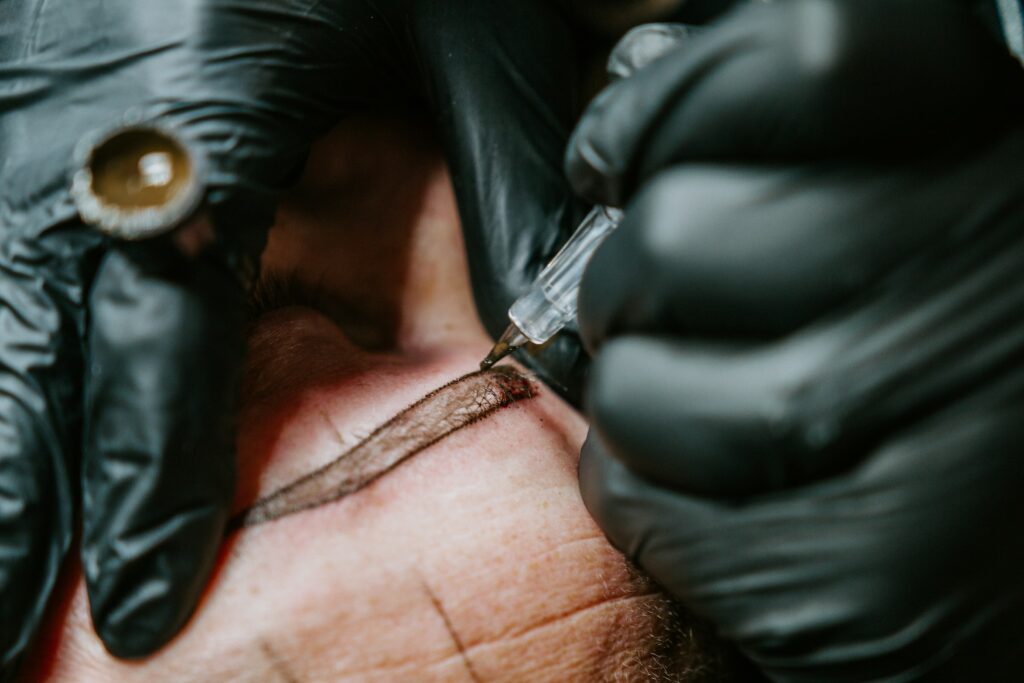Microblading results in fuller, thicker, more natural-looking brows. You won’t have to worry about smudges with Laguna Med Spa Microblading Parker, Colorado. You can go to the gym, run, take showers, swim, and engage in physical activity without worrying about pigment slipping down your face.
Less Painful than Tattooing
While microblading and tattooing may look the same, the procedure is much less painful. It is because Microblading uses a hand tool, which causes less skin damage and less ink. This method also allows for less colour bleeding.
In comparison, tattooing requires a machine and deeper punctures in the skin, which results in more pain and longer recovery times. Microblading is less painful than tattoos, but it does require touch-ups. Some individuals may need touch-ups every six months or a year, particularly if they have oily skin. It is because the pigment on the skin can become clogged with oil secretions. These touch-ups are called ‘root’ and fill in colour where it has become absent. However, it is important not to wait too long between touch-ups because waiting too long can cause the colour to fade, and in some cases, even the whole procedure may have to be done again.
Less Invasive than a Blade
Unlike traditional tattoos, microblading does not require a blade to create a natural-looking eyebrow. Instead, the pigment is deposited into the top layer of the skin. The procedure can produce extremely natural-looking results but has higher risks of scarring and infection. Another alternative, called microshading, is a less invasive procedure that uses a small machine to create tiny dots of pigment on the skin.
Before the procedure, the technician will first numb the eyebrow area and prepare it for microblading. The procedure is less painful than threading but is slightly more invasive than microblading. The microblading artist will use small blades to create tiny hair-like incisions in the skin and deposit the pigment into the skin. While it may be painful, the procedure is much less invasive than traditional tattoos.
Can Be Done on Any Skin Tone
People may choose microblading over traditional makeup for their eyebrows for many reasons. One reason is that this type of treatment is suitable for any skin tone. Generally, people with dark skin are of African descent, but you can get it done on any skin tone – even those with light skin. However, it is essential to consider your skin’s undertone before choosing the correct pigment. Oilier skin tends to have more sebum, which can make microblading problematic.
In addition to skin tone, eyebrow color plays a role in the procedure. Dark-skinned people typically request darker eyebrows, while lighter-skinned people may opt for lighter shades.
Doesn’t Cause Allergic Contact Dermatitis
In most cases, allergic contact dermatitis (ACSD) will not occur following microblading. However, some individuals will experience it. The affected area will develop an itchy, cracking rash in this rare condition. If this happens, a dermatologist can prescribe a steroid to help treat the symptoms and prevent damage to the tattoo.
The pigment used for microblading can contain nickel, a metal that can trigger an allergic reaction. If a patient experiences a nickel allergy, their skin may react the same way as an infection. This condition can be prevented by using a high-quality pigment. In addition, a person should discuss their allergies with their artist.
It is important to note that microblading is not recommended for pregnant women. This is because pregnancy can cause the skin to heal more slowly and could lead to infection. In addition, people with a compromised immune system are more susceptible to infections.
It Lasts 1-3 Years
The cost of microblading Fort Lauderdale will vary depending on your chosen artist. Prices are typically based on the artist’s experience, availability, and time to complete a single treatment. The initial procedure can last anywhere from one to three years, but touch-ups will likely need to be performed yearly. The procedure will take about two hours on each visit. The artist will apply a topical numbing cream to the area before the procedure. Once this has been applied, the artist will draw on your new shape with a dark pencil.
While most permanent makeup artists strive to provide the best results possible, results may vary. The health of your skin, as well as the treatment, can play a large role in the longevity of the results. In addition, every person reacts to a procedure differently. Therefore, discussing any pre-existing skin conditions with your esthetician before scheduling the procedure is essential.
